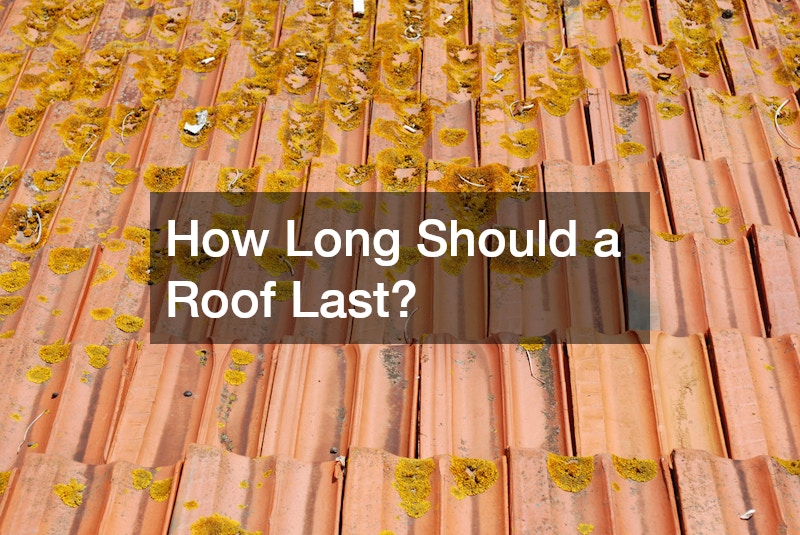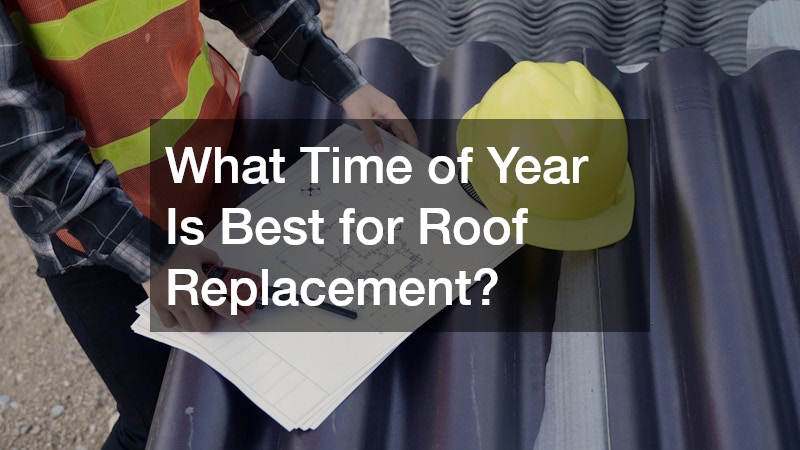
As a homeowner, it’s easy to overlook the condition of your roof until a leak or visible damage makes it impossible to ignore. Roofs protect your home from weather, temperature changes, pests, and more. But like everything else, they wear out over time. The big question is: When should I replace my roof?
Ignoring the warning signs or waiting too long can lead to costly repairs or structural issues. That’s why we turned to roofing professionals to learn the common signs of roof aging, the best time to replace it, and what homeowners should watch out for.
How Long Should a Roof Last?

Your roof’s lifespan largely depends on the type of material used, the quality of installation, and environmental exposure. On average:
- Asphalt shingles last 15–30 years
- Metal roofs can last 40–70 years
- Tile and slate roofs may exceed 50–100 years
- Wood shakes usually last 20–40 years
These are general estimates. Your roof’s actual lifespan can vary depending on factors like weather patterns in your area, the slope of your roof, ventilation, and whether regular maintenance has been performed. Even the best roof materials won’t last forever—knowing the average life expectancy helps you plan ahead.
When Should I Replace My Roof? 6 Warning Signs to Watch For
The best time to replace your roof isn’t necessarily when it fails—it’s when you first spot signs of deterioration. Roofing experts recommend replacing your roof if you notice the following:
1. Missing or Curling Shingles
When shingles start to curl, crack, or go missing, your roof’s protective layer is compromised. Water can seep underneath and cause serious damage.
2. Granules in the Gutter
If you see roof granules (the sandpaper-like particles) in your gutters, it may indicate that your asphalt shingles are deteriorating.
3. Leaks or Water Stains
Water stains on ceilings or walls are often the result of a compromised roof. Small leaks may not seem urgent, but can lead to mold, rot, or insulation issues.
4. Sagging Roof Deck
A droopy or sagging roof deck is often a sign of structural problems caused by long-term water damage or rot.
5. Daylight Coming Through the Roof Boards
If you can see light coming through the attic, it means your roof has holes or weak spots that need immediate attention.
6. Roof Age Exceeds Lifespan
If your roof is older than the expected lifespan for its material, it’s time to consider a replacement—even if it looks okay.
Is It Better to Replace the Roof Now or Wait?
Many homeowners try to stretch the life of their roof as long as possible. While this might save money in the short term, experts warn that waiting too long can result in:
- Costlier repairs if structural damage occurs
- Emergency replacements at inopportune times (e.g., during rainy seasons)
- Water damage to insulation, ceilings, and drywall
- Reduced energy efficiency
Proactive replacement, especially when your roof is nearing the end of its life, often saves money and prevents major headaches. Roofing professionals suggest having your roof inspected every 1–2 years, particularly after strong storms or if the roof is more than 15 years old.
How Often Should You Replace Your Roof? It Depends on These Factors
So, how often should you replace your roof? The answer isn’t one-size-fits-all. Here are the key factors that influence your roof’s longevity and timing for replacement:
• Roofing Material
As mentioned earlier, materials range from 15 to 100 years in life expectancy. Cheaper materials like asphalt wear out faster than metal or slate.
• Weather Conditions
Roofs in areas with heavy storms, snow, hail, or extreme heat typically degrade faster. Sunlight and UV rays can dry out and weaken shingles.
• Installation Quality
A properly installed roof will last significantly longer. Poor workmanship can lead to early failure, even with premium materials.
• Ventilation and Insulation
If your attic isn’t ventilated properly, heat and moisture can cause premature aging and mold growth under the roof deck.
• Roof Maintenance
Cleaning gutters, trimming nearby trees, and checking for moss or debris can extend the life of your roof.
What Time of Year Is Best for Roof Replacement?

Roof replacements can be done year-round, but certain seasons are better than others. Roofing experts generally recommend:
- Late spring to early fall: Mild temperatures and fewer weather delays make this ideal for most areas.
- Summer: Busy season for contractors, so prices may be higher.
- Fall: Great timing before winter storms hit—but book early, as contractors fill up fast.
- Winter: Not ideal due to cold temperatures affecting shingle sealing and worker safety.
If your roof has serious issues, don’t wait for the “perfect” time. Emergency replacements should be handled right away to avoid further damage.
Conclusion
A solid, well-maintained roof is essential to your home’s integrity and safety. While replacement might seem like a big investment, recognizing the signs early and taking action at the right time can save you from costly repairs and improve your home’s resale value. So, when should you replace your roof? According to the experts, when the signs are there, the age is right, and the risks of waiting are higher than the cost of replacement.
